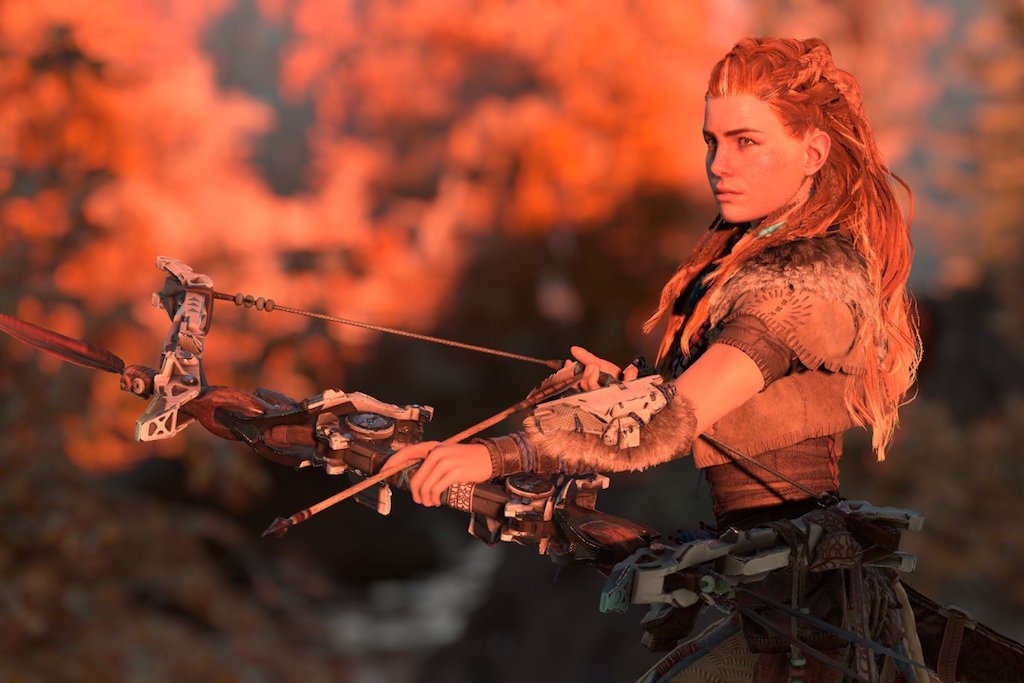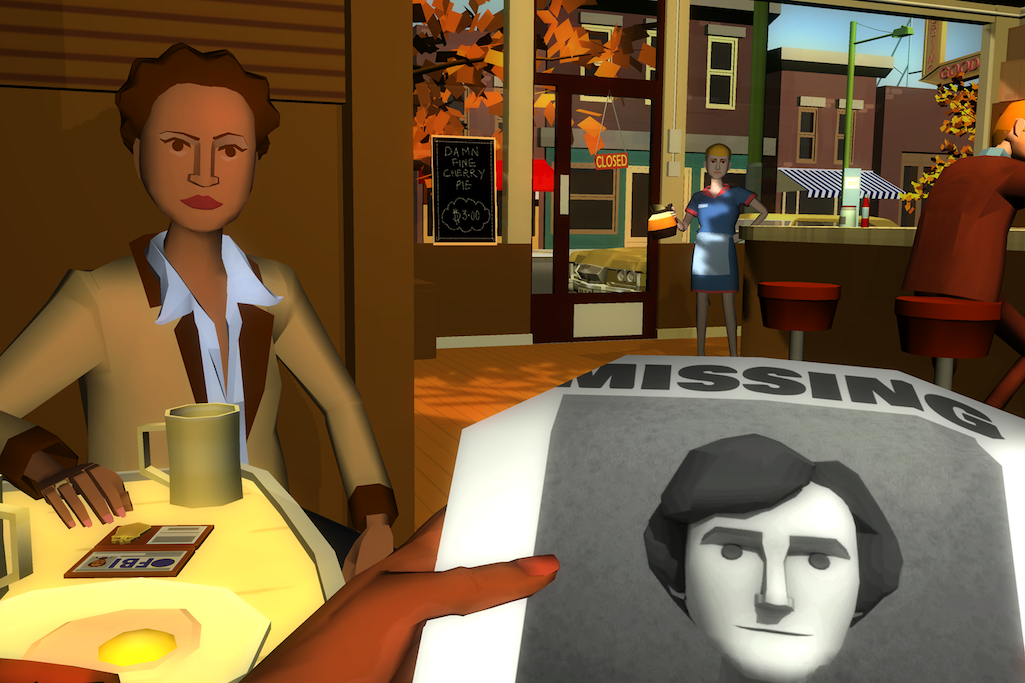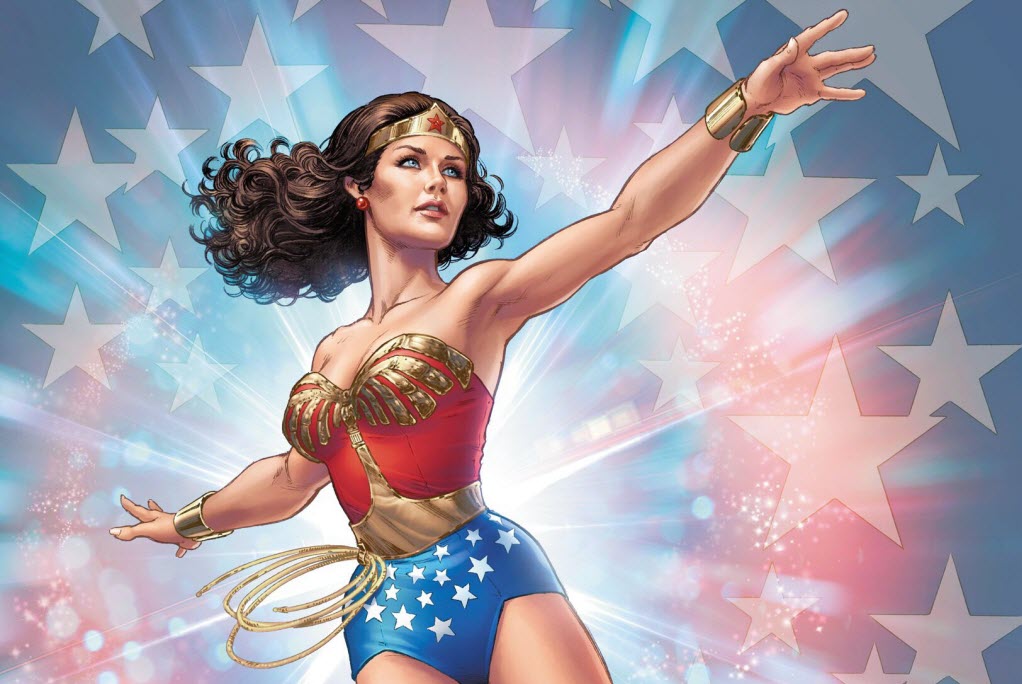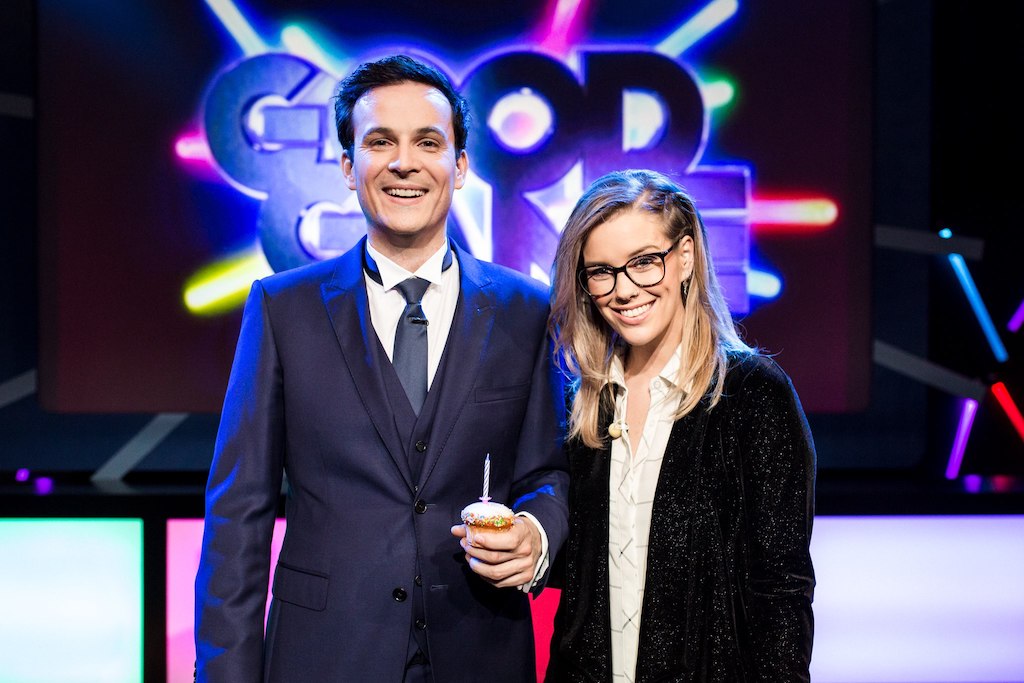The Future (Of Gaming) Is Female: A Look At The Rise And Power Of Female Characters
We spoke to Good Game's Stephanie 'Hex' Bendixsen.


In an era where machines roam the land and mankind is no longer the dominant species, a young hunter named Aloy embarks on a journey to discover her destiny.
We are entering a new era in gaming. New PlayStation 4 exclusive Horizon Zero Dawn is an epic open world RPG notable for its cinematic visuals, wowser narrative twists and electrifying combat. The other thing worth mentioning: the lead character is female. Horizon Zero Dawn’s Aloy is one of a small coterie of playable female characters in the gaming world that is slowly pushing back against decades of male domination.
“The industry is seeing a need to shift, but publishers are nervous about it because they feel like their core demographic is young males and young males want to play heroic male characters,” says leading gaming critic Stephanie ‘Hex’ Bendixsen. “Publishers are still driven by stats, but it’s like a snake eating its own tail. More women aren’t going to start playing games unless they see themselves represented in games.”
Hex has had a lifetime of fun with a controller in hand, but the vast majority of her gaming avatars have been men. In a world where women are traditionally consigned to damsel-in-distress or hypersexualised cliché, complex female characters that act with autonomy and purpose are hard to find. But they exist, and their numbers are growing.
The Secret Women And Busty Babes Of The Early Days
In the early days of console gaming, women were snuck into the outskirts. One of the earliest playable female characters was Samus Aran in Metroid (1986), a helmeted space crusader who was referred to as ‘he’ in the game’s marketing material. It was only when a player completed the game in under five hours that Samus removed her helmet to reveal a long ‘shock’ of blonde hair — a clumsy gender signifier in an 8-bit world.
In the ’90s, girls in games moved from shock object to sex object — the scantily clad protagonist proliferated. At best, women were bloodthirsty bad-asses who could ‘hold their own’ in a man’s domain, like Chun-Li of Streetfighter (1992) who was an early icon, letting fly with rapid-fire lighting kicks then declaring herself as “the strongest woman in the world”. Lara Croft of Tomb Raider (1996) was the pinnacle of women’s representation in that era — the sole protagonist in an action adventure landscape. She was massively popular, but not quite the avatar girl gamers deserved.
“Even people who don’t play games know Lara Croft, but she was really designed within the male gaze, as a kind of busty, hot-pants wearing hero running through the jungle,” Hex says. “There was a rumour that the game designer was playing around with different sliders for her body parts and accidentally pulled the slider way out for her bust, and just decided to leave it there.”
Skip ahead more than a decade, and the Lara Croft reboot shows how female characters have slowly become more nuanced in both their motivations and their choices. Exploring Lara’s origin story, Tomb Raider (2013) presents the killer archaeologist at the non-violent beginning of her career, compelled by circumstances towards her hardened, heroic future.
“What it did as a game was explore the consequence of death for the first time. The first thing she has to kill is actually a deer, and that moment has real weight, she’s really sorry for having to take that life. From a woman’s perspective, I think that’s really interesting.
“Then when she has to have a confrontation with a male enemy, that moment is really intense as well, you see her forced into a situation where she has to take action, it’s really quite violent, and it’s just really rare for a game to have that point of view.”
(Literal) Girl Power
Modern-day Lara remains easy on the eyes, but this is no longer a prerequisite for female heroines. While there have always been female characters designed for little girl gamers — hello, Ms. Pacman! — recent years have seen girls appear as playable characters in popular mainstream games. At first appearing as the kid companion of the lead character, Clementine takes centre-stage in The Walking Dead: Season Two (2013) and proceeds to wreak unholy hell on the zombie apocalypse with smarts, maturity and exceptional survival skills.
Ellie, the potty-mouthed tween from the critically-acclaimed survival horror game The Last of Us (2013), has a similar spunk. “She’s forced to grow up and make a lot of tough decisions and learn to survive really quickly,” says Hex. “There are moments when she is quite vulnerable but she manages to fight her way through using her intelligence and agility. You can’t rely on weapons much in that game, so it was really interesting to see a female character navigate an environment that you would normally tackle with guns, when you play as her.”
This is the new breed of female heroine; not some tokenistic character with fantastical physical proportions, not a ditsy dame in need of rescuing. Women have begun to take on complex roles in big franchise games — like Cass in Fall Out: New Vegas (2012) and Aveline in Assassin’s Creed 3 (2012), but the most interesting characters on the make are not bit-players in someone else’s story. They are the women who take centre-stage, like Aloy in Horizon Zero Dawn, Faith in Mirror’s Edge (2008), Chell in Portal (2007) and FemShep in Mass Effect 3 (2012). They are characters who make us think about what a woman might bring to the story.
Relative to the avalanche of titles that feature men — particularly white men — as lead characters, women in games still have a long way to go, but we are pointed in the right direction.
“I’d like to hope that publishers are waking up to the fact that people want to play games featuring all kinds of characters,” Hex says. “I don’t necessarily need to play as a woman to enjoy a game, but I want to have characters that have interesting stories and a unique perspective. It’s about having the option out there so that you can be excited about an industry representing you and being inclusive of everyone.”
–
Feature image: Aloy in PlayStation 4 exclusive Horizon Zero Dawn.
–
Want to escape to a distant future and experience the next era of mankind? Take things to the next level by exploring the post-post-apocalyptic world of Horizon Zero Dawn. The game is exclusive to PlayStation®4 and available on PS4™ and PS4™Pro. Learn more here.


